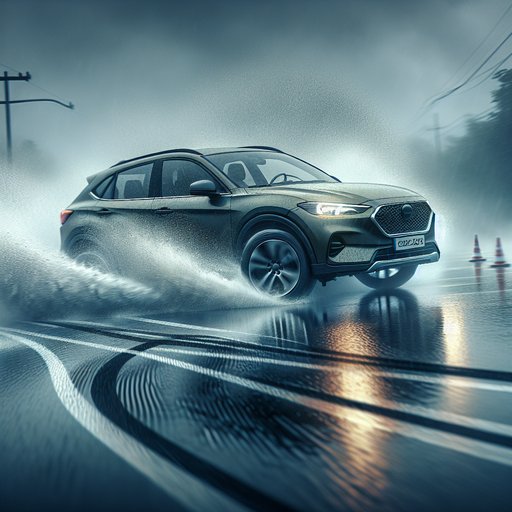
We ran an ISO-style sudden lane-change (moose test) with increasing entry speeds to probe the CX-5 Turbo’s stability control calibration and tire grip limits. Here’s how Mazda’s popular AWD crossover behaves when you need to swerve now.
Our test vehicle was a 2024 Mazda CX-5 2.5 Turbo AWD (256 hp/320 lb-ft on 93 octane; 227 hp/310 lb-ft on 87), six-speed automatic, curb weight approximately 3,825 lb. It rode on factory 225/55R19 all-season tires (Toyo A36 on our tester), set at the door-jamb spec of 36 psi cold. Dynamic Stability Control (DSC) is not fully defeatable; drive modes are Normal and Sport. Testing took place on a dry, level asphalt course laid out to ISO 3888-2 dimensions, with VBOX data logging.
Ambient was 68°F, surface temp 77°F, light crosswind (4–6 mph). Two occupants and half a tank of fuel put the test mass roughly 350 lb over curb. We increased entry speed in 2 km/h steps, holding a consistent steering rate and lifting off the throttle at turn-in. The CX-5 cleaned the maneuver at 68, 70, 72, and 73 km/h.
At 74 km/h there was mild front push exiting the second lane but still controllable; at 75–76 km/h it consistently clipped cones on the second transition as the front tires saturated. Best clean pass: 73 km/h (45.4 mph) in Normal. Sport mode didn’t materially change the limit but gave slightly heavier steering; we recorded a marginal clean at 74 km/h once, with similar path control. Body roll is well-checked for a crossover, and the rear follows predictably with no snap behavior.
DSC tuning allows a beat of natural yaw before intervening, then trims with brief inside-rear brake applications and a short throttle cut (about 0.2–0.3 s) mid-transition. The system prioritizes stability over speed: it doesn’t clamp aggressively, but you can feel it nudge the nose back in when the front washes wide. On back-to-back hot runs, intervention becomes a touch earlier as tire temps rise, helping keep the car tidy but making the second lane exit wider. Peak lateral acceleration measured 0.83 g on the first swerve and around 0.79 g through the second.
The all-season tires are the limiting factor: audible scrub appears by 72 km/h, with shoulder rollover marks at the fronts after five runs. Temperatures at the outer front tread hit 104°F, pressures climbed ~1 psi. Bumping pressures to 38 psi front/36 rear improved response consistency but didn’t raise the clean-pass ceiling. Expect notably higher margins with a 235/50R19 or 225/55R19 ultra-high-performance summer tire in warm weather.
Overall, the CX-5 Turbo feels composed and confidence-inspiring in emergency maneuvers. DSC is well-calibrated for real roads—hands-off enough to steer naturally, quick enough to save sloppier inputs—and the chassis remains coherent under rapid weight transfer. The limiting factor is the OEM all-season rubber. For drivers who regularly cruise at higher speeds or tow, we recommend maintaining 36–38 psi, avoiding heavy roof loads, and fitting quality summer tires in warm months to add a useful buffer of grip without compromising the CX-5’s balanced character.












